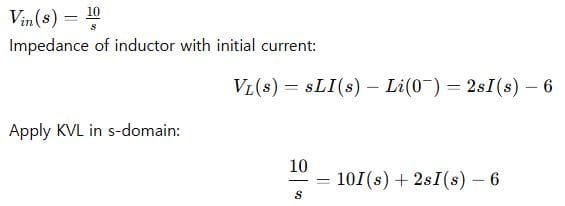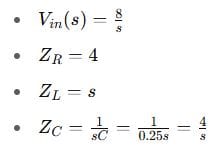Mastering Circuit Analysis with Laplace Transforms Step by Step
If you’ve ever found solving differential equations in circuits messy or slow, you’re not alone. The Laplace Transform is one of the most powerful tools electrical engineers use to simplify complex time-domain circuit problems into algebraic ones in the frequency (s-domain). In this post, we’ll break down what Laplace transforms are, how they’re used in circuit analysis, and work through three detailed examples — beginner, intermediate, and advanced.
Why Use Laplace Transforms in Circuit Analysis?
When you analyze circuits with capacitors and inductors, you’re often forced to deal with derivatives and integrals due to their time-domain behavior. For instance:
- An inductor’s voltage is proportional to the time derivative of current.
- A capacitor’s current is proportional to the time derivative of voltage.
This naturally leads to differential equations. But solving differential equations every time isn’t always efficient. That’s where Laplace transforms shine. They turn those calculus-heavy equations into straightforward algebra.
The Basics: Laplace Transform in a Nutshell

Laplace-Domain Equivalent of Circuit Elements
To apply Laplace transforms in circuits, you need to convert time-domain elements to their s-domain equivalents.

Step-by-Step Circuit Analysis Using Laplace
Here’s a general approach:
- Transform the circuit into the s-domain.
- Apply Kirchhoff’s laws (KVL or KCL) in the s-domain.
- Solve the algebraic equations for voltages or currents.
- Take the inverse Laplace transform to get the time-domain solution.
Example 1: Beginner Level
First-Order RC Charging Circuit
Problem:
Find the voltage across a 1 µF capacitor in a series RC circuit with R = 1 kΩ and a step input voltage

Step 1: Transform to s-Domain

Step 2: Total Impedance

Step 3: Voltage Divider

Step 4: Simplify

Step 5: Inverse Laplace

Example 2: Intermediate Level
RL Circuit with Initial Current
Problem:

Step 1: Transform

Step 2: Solve for I(s)

Step 3: Simplify

Step 4: Partial Fractions & Inverse

Example 3: Advanced Level
Second-Order RLC Series Circuit
Problem:
Given: R = 4 Ω, L = 1 H, C = 0.25 F

Step 1: s-Domain Transformation

Step 2: Total Impedance

Step 3: Voltage Divider
Capacitor voltage in s-domain:

Step 4: Inverse Laplace
Use partial fractions:

Final Thoughts
Laplace transforms are essential for engineers working with transient and frequency-domain analysis. They not only simplify the math but also provide insights into system behavior like poles, zeros, damping, and stability. As you’ve seen through these examples, whether it’s a basic RC circuit or a more complex RLC network, Laplace transforms can handle it all with elegance.

Leave a Reply